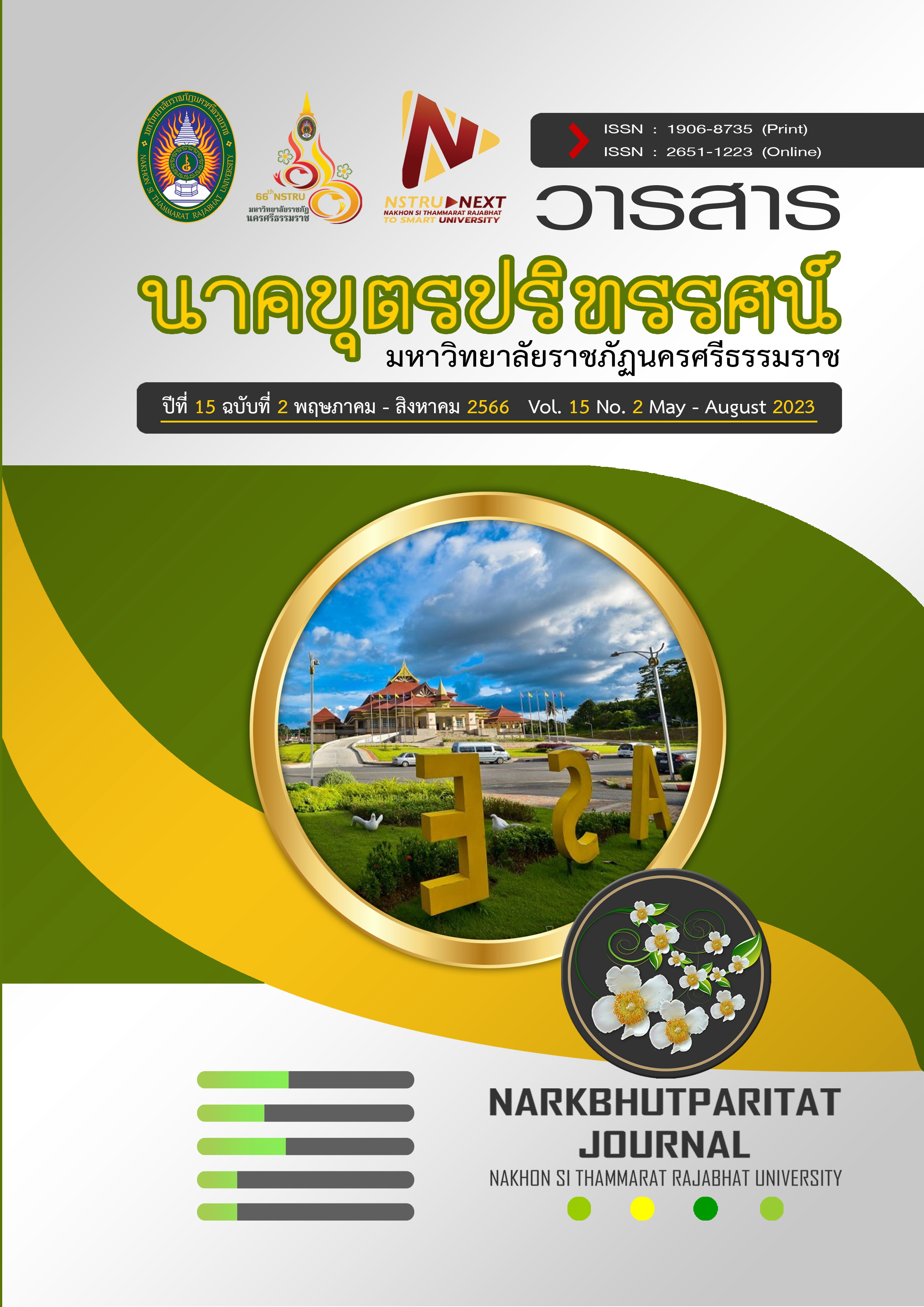Relationship Between Organizational Capability and Corporate Social Responsibility of Certified Green Industry in Thailand
Main Article Content
Abstract
The purposes of this research were to study the organizational capabilities and corporate social responsibility of the green industry that has been certified in Thailand, and to study the relationship between the organizational capabilities and corporate social responsibility of the green industry has been certified in Thailand. It was a mixed research method. The key informants are 12 operational executives or persons responsible for the environment of factories certified green industry, with at least 5 years of environmental experience. A sample of 9 groups of food and agricultural industry entrepreneurs from the Ministry of Industry totaling 438 factories by random sampling. A non-probability theory-based sampling method was used. Plan a 3-step multistage sampling plan: selective sampling; Quota sample selection and convenience random sampling Research tools were in-depth interviews. The organizational capabilities and corporate social responsibility questionnaire had a reliability of 0.971. Statistics in data analysis were mean, percentage, standard deviation and the Pearson correlation coefficient. The results of the research revealed that 1) the environmental management approach of industrial plants requires cooperation between the public and private sectors in raising awareness of all stakeholders in the environment. encourage the introduction of environmental issues, 2) organizational capabilities had a medium positive correlation with corporate social responsibility in economic, legal, ethical and social contribution. There was statistical significance at the 0.01 level.
Article Details

This work is licensed under a Creative Commons Attribution-NonCommercial-NoDerivatives 4.0 International License.
References
Boonchaisuk, P. (2013). Creative industries Driving the Thai economy stronger. Retrieved 2020 December, 1, from http://library.dip.go.th/multim6/edoc/2556/22145.pdf. (in Thai)
Bunprom, P. (2010). Tools for Sustainable Environmental Management. Suthiparithat Journal, 24(73), 169-184. (in Thai)
Economic Intelligence Center. (2016). Catch the Thai industrial direction in 2016. Bangkok: The Siam Commercial Bank Public Company Limited. (in Thai)
Hair, J. F., Black, W. C., Babin, B. J., Anderson, R. E. & Tatham, R. L. (2006). Multivariate data analysis (Vol. 6): Upper Saddle River, NJ: Pearson Prentice Hall.
Harrison, C., Burnard, K. & Paul, S. (2017). Entrepreneurial leadership in a developing economy: a skill-based analysis. Journal of Small Business and Enterprise Development, 25(3), 521-548.
Helfat, C. E. & Peteraf, M. A. (2003). The dynamic resource-based view: Capability lifecycles. Strategic management journal, 24(10), 997-1010.
Horadal, P. (2010). Modern Factoring Management. Industry Technology Lampang Rajabhat University, 3(2), 52 - 58.
Huang, B., Wu, B. & Barry, M. (2010). Geographically and temporally weighted regression for modeling spatio-temporal variation in house prices. International Journal of Geographical Information Science, 24(3), 383-401.
Inan, G. G., & Bititci, U. S. (2015). Understanding Organizational Capabilities and Dynamic Capabilities in the Context of Micro Enterprises: A Research Agenda. Procedia - Social and Behavioral Sciences, 210, 310-319. doi:10.1016/j.sbspro.2015.11.371
Krejcie, R. V. & Morgan, D. W. (1970). Determining sample size for research activities. Educational and psychological measurement, 30(3), 607-610.
Laudal, T. (2010). An attempt to determine the CSR potential of the international clothing business. Journal of business ethics, 96(1), 63-77.
Law, K. M. (2010). Factors affecting sustainability development: high-tech manufacturing firms in Taiwan. Asia Pacific Management Review, 15(4), 619-633.
Lindgreen, A. & Swaen, V. (2010). Corporate social responsibility. International Journal of Management Reviews, 12(1), 1-7.
March, J. G. (1991). Exploration and exploitation in organizational learning. Organization science, 2(1), 71-87.
Ministry of Industry. (2011). Green Industry. Retrieved 2021, June, 1 from http://www.industry.go.th/chainat/index.php/download/2016-06-03-00-10-23/214-2016-07-06-03-36-25/file. (in Thai)
NESDC. (2016). 12th National Economic and Social Development Plan. Retrieved 2021, June 1, from https://www.nesdc.go.th/ewt_dl_link.php?nid=6422. (in Thai)
Office of the Prime Minister. (2018). Thailand's National Strategy B.E. 2561 - 2580 (Royal Gazette Edition). Retrieved 2020, December 1, from https://www.opm.go.th/opmportal/multimedia/suphatdo/NS_plan%2061-80/NS_PlanOct2018.pdf. (in Thai)
Orji, P. A. O. C. L. & Olua, O. C. K. (2015). Productivity Improvement of Small and Medium Scale Enterprises using Lean Concept: Case Study of a Bread Factory. European Journal of Business and Management, 7(32), 73 - 84.
Preuss, L. (2011). Innovative CSR: A framework for anchoring corporate social responsibility in the innovation literature. The Journal of Corporate Citizenship, 42(1), 17.
Schienstock, G. (2009). Organizational Capabilities: Some reflections on the concept. IAREG-Intangible Assets and Regional Economic Growth, 1(2), 39-53.
Simachokedee, W. (2012). Thai green industry. TPA News, 16(187), pp. 26. (in Thai)
Tongkachok, T., & Chaikeaw, A. (2013). The Factors Influencing Corporate Social Responsibility of Listed Companies in the Stock Exchange of Thailand. Journal of Management Sciences, 30(1), 23-51. (in Thai)
Trongwattanawuth, S. & Siriprasertsin, P. (2022). Organizational Capabilities on Environmental: Concepts, Definition and Guideline for Operational of Environment Sustainability of Certified Green Industry in Thailand. The Journal of MCU Peace Studies, 10(4), 871-885. (in Thai)
Wang, C., Zhang, Q., & Zhang, W. (2020). Corporate social responsibility, Green supply chain management and firm performance: The moderating role of big-data analytics capability. Research in Transportation Business & Management, 37, 100557.
Wiriyapipat, N. (2009). Trend of CSR: Gearing towards ISO 26000. University of the Thai Chamber of Commerce Journal, 29(3), 193-205. (in Thai)
Wongprasert, R. (2013). Creating Shared Value: Good Practice for Society. Executive Journal, 33(3), 75-81. (in Thai)


